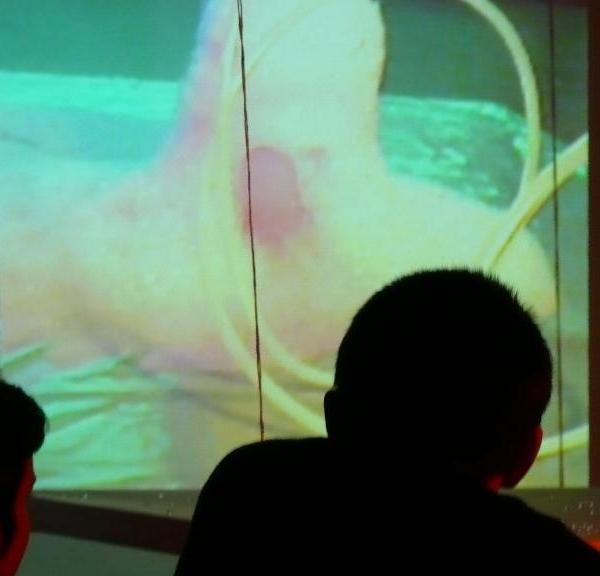
Origin:
The Bubble Project (2006) is the first piece created for the Project X Installation Series, which was developed during my Bachelor of Arts Degree at Concordia University, Montreal, QC, Canada (2005-2008). The Series is made up of three installations: the Bubble Project (2006), White Rain (2007), and Looking Glass (2008).
About:
With the Bubble Project, a live camera feed projects onto a wall the event which is unfolding within an 8′ x 10′ enclosure.
The event involves the generating of pink bubbles, foaming from a plastic bottle that sits below two translucent vellum screens, suspended and set at a 45-degree angle from each other.

Image 18, The Bubble Project (Detail), Project X Installation Series, Naccarato, Montreal, QC, 2007 
Image 17, The Bubble Project (Detail), Project X Installation Series, Naccarato, Montreal, QC, 2007 
Image 16, The Bubble Project (Detail), Project X Installation Series, Naccarato, Montreal, QC, 2007 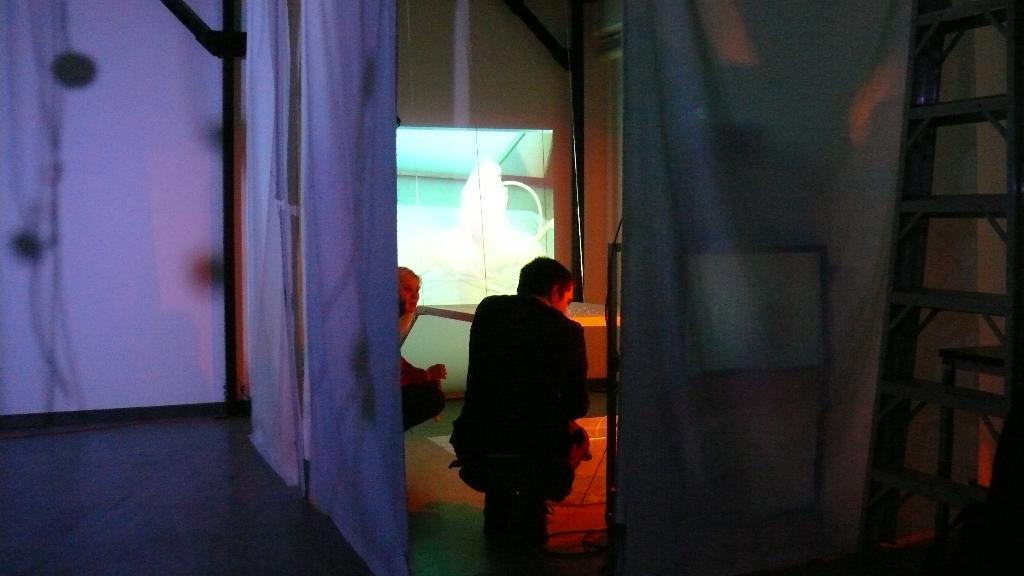
Image 15, The Bubble Project (Detail), Project X Installation Series, Naccarato, Montreal, QC, 2007 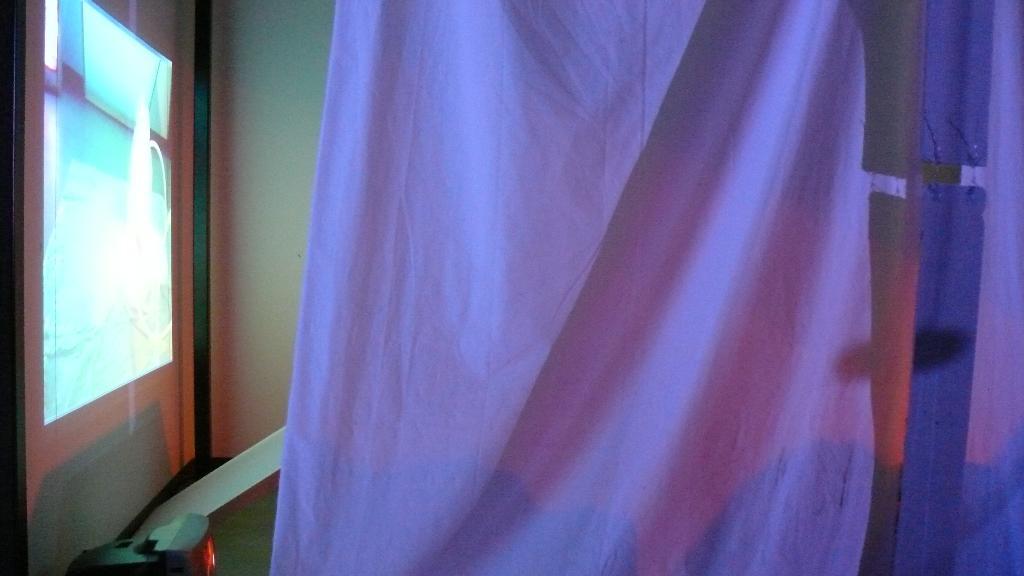
Image 14, The Bubble Project (Detail), Project X Installation Series, Naccarato, Montreal, QC, 2007 
Image 13, The Bubble Project (Detail), Project X Installation Series, Naccarato, Montreal, QC, 2007 
Image 12, The Bubble Project (Detail), Project X Installation Series, Naccarato, Montreal, QC, 2007 
Image 11, The Bubble Project (Detail), Project X Installation Series, Naccarato, Montreal, QC, 2007 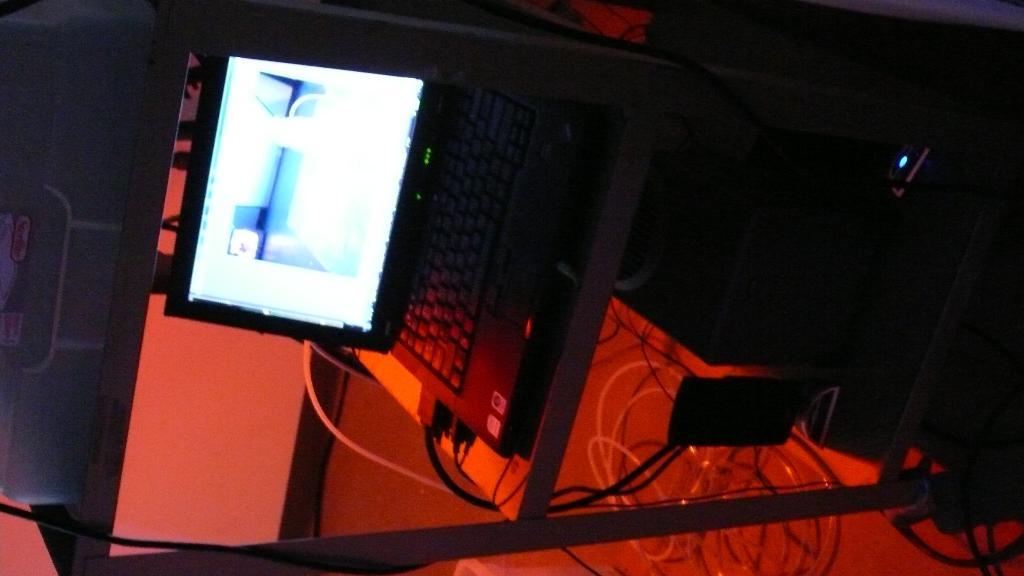
Image 10, The Bubble Project (Detail), Project X Installation Series, Naccarato, Montreal, QC, 2007 
Image 08, The Bubble Project (Detail), Project X Installation Series, Naccarato, Montreal, QC, 2007 
Image 08, The Bubble Project (Detail), Project X Installation Series, Naccarato, Montreal, QC, 2007 
Image 07, The Bubble Project (Detail), Project X Installation Series, Naccarato, Montreal, QC, 2007 
Image 04, The Bubble Project (Detail), Project X Installation Series, Naccarato, Montreal, QC, 2007 
Image 05, The Bubble Project (Detail), Project X Installation Series, Naccarato, Montreal, QC, 2007 
Image 04, The Bubble Project (Detail), Project X Installation Series, Naccarato, Montreal, QC, 2007 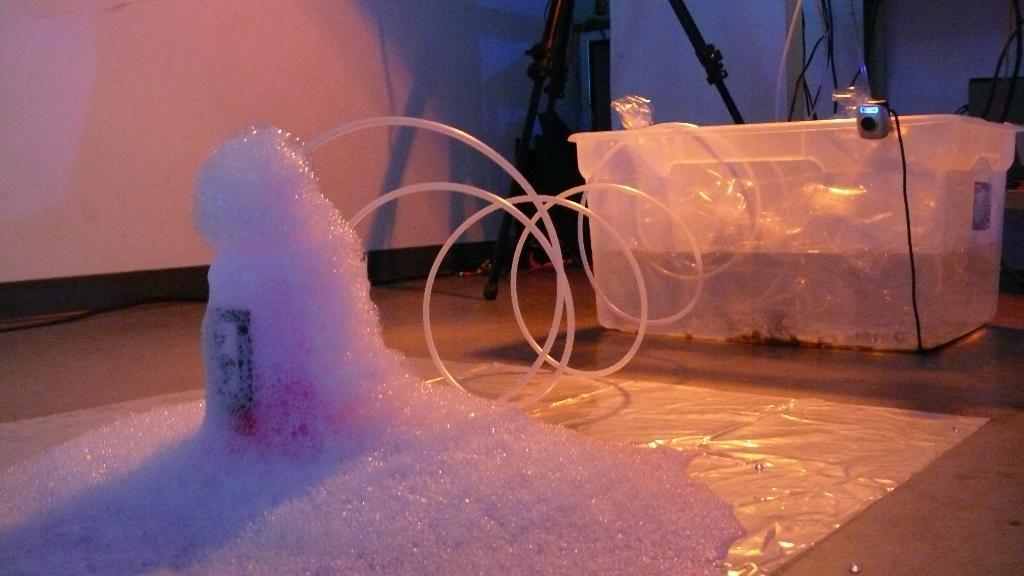
Image 03, The Bubble Project (Detail), Project X Installation Series, Naccarato, Montreal, QC, 2007 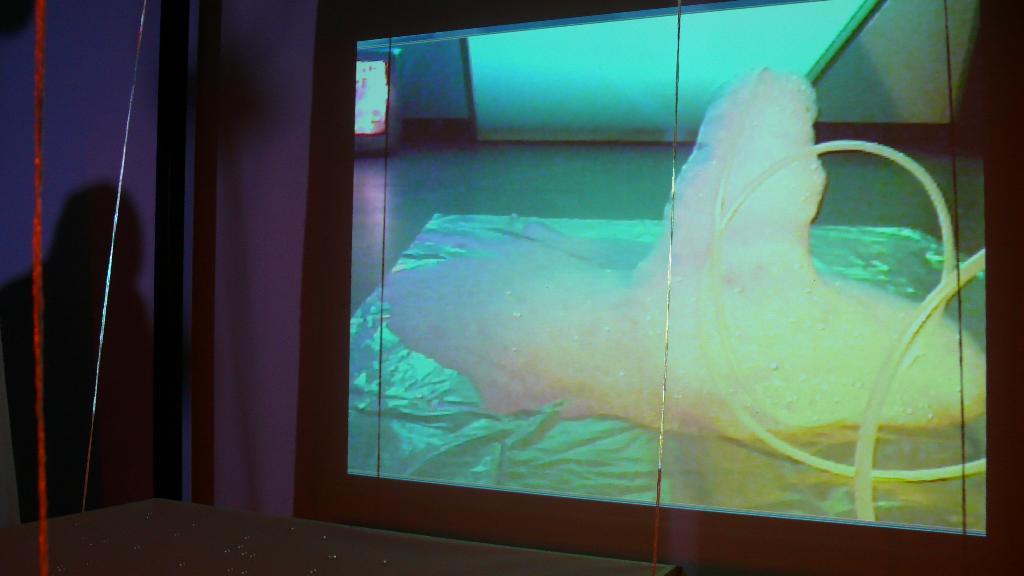
Image 01, The Bubble Project (Detail), Project X Installation Series, Naccarato, Montreal, QC, 2007
Located just before the vellum screens, sits a plastic container filled with water, empty inflated plastic bags, and coloured pebbles. Also, some plastic tubing runs from somewhere outside the container and coiling itself in the water before making its way to the mouth of the plastic bottle which is foaming with pink bubbles.
On the horizontally placed translucent vellum screen, small clear glass beads sit scattered over its surface.
The final three elements which make up the installation, involve a TV monitor which sits on the floor, a projector and laptop located at the back, and a small pump hidden from view which connects to the clear plastic tubing and is the source generating the air, causing the bubbles and foam.
Thoughts on The Bubble Project
The Bubble Project has a sense of intimacy, exploration and reflection. It is in part, an ‘Art’ work but also some sort of ‘Scientific’ experiment, in which visitors may feel they have entered a laboratory, with some sort of experiment and transformation taking place.
There is an intentional ambiguity at work with the Bubble Project, in terms of what is real, and what may be applied by the visitor’s own perceptions and understanding of the work. This notion is further emphasized by the projection of a live feed of the event onto the wall and via the TV monitor on the floor. However the live feed is looped through a coded program from the laptop which is mediating–subtly altering the colours and appearance of the live feed, and in turn, creating a discrepancy between the two experiences, between the physically real and mediated real.
Canadian media artist David Rokeby has extensively explored technology’s ability to mediate perception. In his installation, Watch (1995-96), Rokeby points a surveillance camera out onto a public street, projecting the resulting video signal onto a gallery wall. The image is broken up into two separate screen frames.
As Rokeby explains, “In one the only things visible are things that are standing still” and ”people that are moving are blurs or fogs across the image. People that are still are seen clearly. The second process is the conceptual inverse of the first. People are only visible if they are in motion. They float as outlines of themselves in a dimensionless black void, and disappear again as soon as they are still” (n. par.).
Rokeby went on to expand the concept he developed in Watch, with Seen (2002) and later San Marco Flow (2005), which are all strongly suggestive of the power of technology to mediate perception.
Rokeby makes a very interesting point in terms of how our relationship to technology should unfold. He explains that:
“The computer as a medium is strongly biased. And so my impulse while using the computer was to work solidly against these biases. Because the computer is purely logical, the language of interaction should strive to be intuitive. Because the computer removes you from your body, the body should be strongly engaged. Because the computer’s activity takes place on the tiny playing fields of integrated circuits, the encounter with the computer should take place in human-scaled physical space. Because the computer is objective and disinterested, the experience should be intimate (n.par).